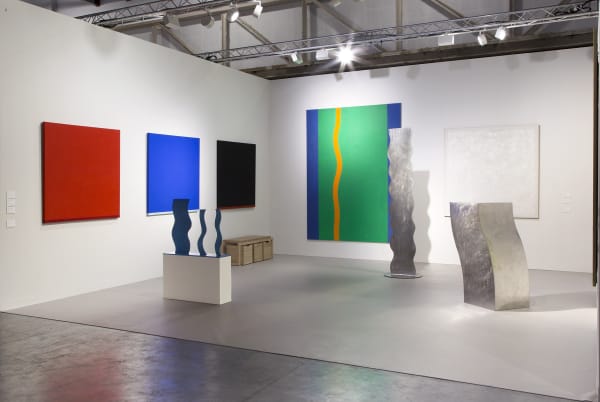Art Basel Miami: William Turnbull: Expanding Colour 1958-1972
Between 1958 and 1972, William Turnbull worked across painting and sculpture, producing bold, sequential, Colour Field paintings, alongside industrially manufactured sculptures in steel. Informed by a trip to New York in 1957 during which he met Barnett Newman and Mark Rothko, Turnbull's single-colour canvases were often topped and tailed by thin bands of another color or were overlaid with gestural marks. By 1960, they were typically flatly painted with slim curves or borders of an opposing hue, the detail emptied out to the edges of the canvas, a concern shared with his friend Newman.
While intended to be non-referential, in fact, the images of curves and circles had evolved out of drawings of the human head, and the channels' running through a series of oils from 1963 suggested aerial views of rivers the artist remembered from his time as a pilot in the RAF during the Second World War and saw again in Cambodia in 1962. Turnbull also explored the motif of rivers and moving water in his sculptures, applying bright colour for the first time in 1963. Recalling his earlier totemic bronzes, these presented a new kind of standing figure and were conceived to be shown alongside the paintings.








